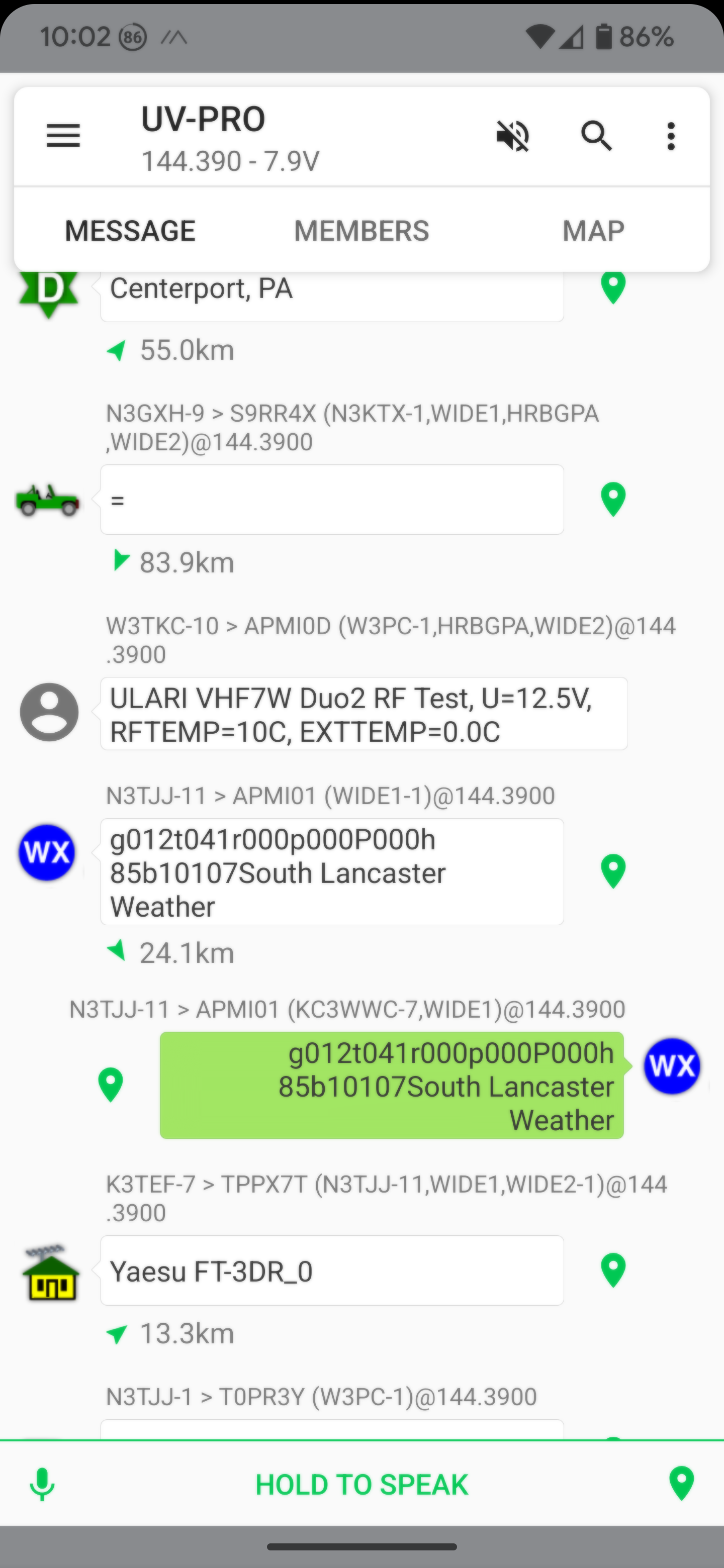My Week in Radio
- Reconfigured
fldigiwith some more modular macros and used them for a short time for CQ WPX RTTY contest - Replaced my 71-foot EFRW with 107-foot wire
- ATU works a bit harder than the previous, but stretching the counterpoise in a different direction helped.
- 5W into the wire got me a contact to Japan on FT8
Others
- KC3SCY, Luke:
- building out his radio desk
- new Drake TR-4A and matching transmitter
- W8CRW, CR:
- Nets
- WA3VEE, Ron:
- checking out and testing equipment
- interviewed on podcast: “operation freedom. ham radio in public service.”
- KB3SVC presented on senior scams at another meeting
- W3QP, Tim:
- 11 summits in Virginia!
- KC3TYX, Vic:
- VHF nets, No HF.
- hiking and geocaching.
- NA3CW, Chuck:
- 985 activities
- tower work at Joe’s when weather permits.
- acquired merantz professional CD recorder
- PM/AM net pre-net host. much better at 3:30pm for pre-net.
- KC3OOK, Bill:
- 985 nets
- South control for Simplex Net
- 37 check-ins with only 2 controls
- Passed along some gear to others via Joe
- KD3AIS, Tim:
- drove to Parkesburg, and remembered to bring mobile glass-mount antenna and HT, so could contact to the repeater via RF.
- AF3Z, Jim:
- working on Omni 6, which is broken
- getting worse as he diagnoses
- visited old shack in basement and rearranged it
- finally returned to MB102 heathkit rig with power supply
- replaced some capacitors
- now working!
- working on Omni 6, which is broken
- KC3SQI, Wayne:
- email reminder was appreciated to host the workbench
- WA3KFT, John:
- playing with some heathkit lunch boxes.
- 2m, 6m, 11m
- doesn’t have the 10m
- they’re regenerative receivers
- not very efficient transmitters
- vibrator power supply for radios that run off 120V AC
- was convenient back in the day to be able to hang equipment from the old dashboard in cars.
- playing with some heathkit lunch boxes.
Questions
- KD3AIS, Tim:
- Given his recent foray
into mobile radio and a glass-mounted antenna,
he’s looking at mobile rigs.
He’s seeming some that are higher-power single band,
and some lower-power dual band.
Also seeing single-band and dual-band antennas.
But no 70cm single-band antennas.
Recommendations and considerations?
- WA3VEE, Ron:
- Ron just runs high-power dual-band.
- there are lots of 70cm repeaters around the area.
- magmount antennas on top.
- don’t worry about 65W vs 50W. close enough.
- W3CRW, CR:
- found a 70cm-only antenna on amazon.
- still recommend dual band
- WA3KFT, John:
- dual band antenna is nicer for 70cm.
- he dedicates a 70cm antenna and a 2m
- KC3NZT, Harvey:
- don’t worry much about power on dual-band radios
- watch for nicer features
- full-duplex
- digital control
- dual-watch
- K3YVQ, Jack:
- has Larson NMO 270 antenna to give away
- KC3OOK, Bill:
- recommended a couple radios with those features
- NA3CW, Chuck:
- dual-band rigs run less power because they’re a compromise.
- single-band rig is no compromise, but more limited in features.
- there are 470MHz antennas for commercial bands
- feature: wishes his rig had split tones.
- W8CRW, CR:
- crossband repeat
- split tones
- WA3VEE, Ron:
- Yaesus generally don’t support split tone
- ICOMs generally do
- W3GMS, Joe:
- ICOM IC-2730A is great
- split tone
- good cooling
- power makes a huge difference when you’re trying to open squelch on a repeater
- nmo mount is nice, because you can swap specialized antennas.
- ICOM IC-2730A is great
- KC3SQI, Wayne:
- run IC-4730 for split tone and crossband
- WA3VEE, Ron:
- Given his recent foray
into mobile radio and a glass-mounted antenna,
he’s looking at mobile rigs.
He’s seeming some that are higher-power single band,
and some lower-power dual band.
Also seeing single-band and dual-band antennas.
But no 70cm single-band antennas.
Recommendations and considerations?
- KC3WWC, John:
- Adding another dual-band antenna outside, probably dedicated to APRS. How close can they be or how should they be arranged?
- WA3KFT, John:
- 5 vertical antennas: 10, 6, 2m, 220, 440.
- 2m and 440 are harmonically related, so separated
- all mounted on a bar.
- 440 and 2m are separated 7.5 ft, so they don’t interact.
- 35 ft off the ground.
- can’t separate them that much on a car.
- 5 vertical antennas: 10, 6, 2m, 220, 440.
- KC3SQI, Wayne:
- if the antennas are harmonically related, attempt to separate at least 2 wavelengths
- dual band antennas are
- DX Engineering has an antenna bar already setup with multiples
- WA3VEE, Ron
- Diamond dualband is good. mounted on front.
- 220 in the middle
- something else on the far back of the vehicle.
